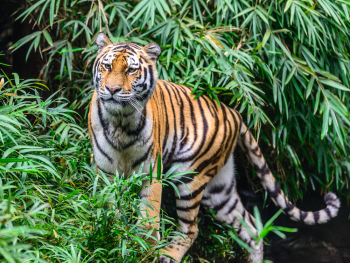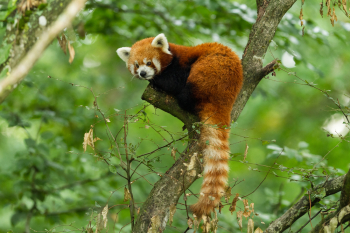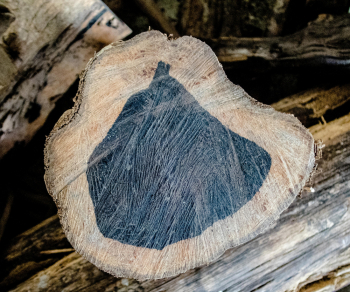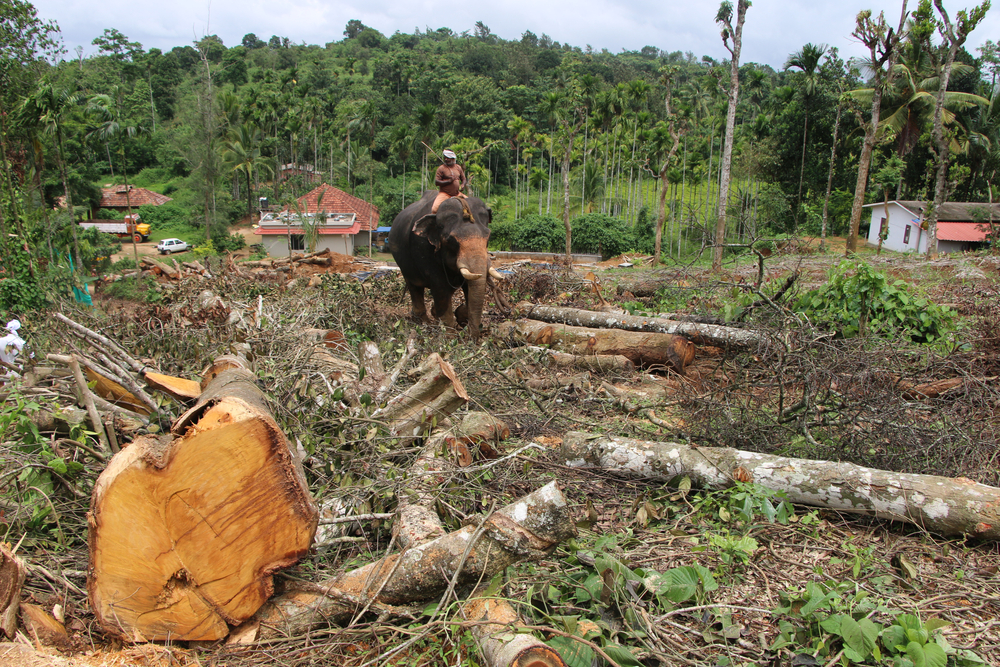Environment: Endangered Species
An endangered species is a species of animal or plant that is seriously at risk of extinction. The International Union for Conservation of Nature (IUCN), an organization funded by the European Commission, is regarded as a global authority on the world’s living species and maintains a list of the world’s endangered species. More than 8,000 scientists from 162 countries make up the IUCN’s Species Survival Commission, which designates as “threatened” any species falling within the critically endangered, endangered, and vulnerable categories. These species are assigned categories based on the level of extinction risk. Identifying a species as threatened and assigning it to one of the related categories is a complicated process, involving the analysis of multiple interconnected variables. These include population size, geographic range, and the number of breeding adults.
Risk Factors
Population Size
There are a variety of factors that put these plants and animals at risk. Most species placed on endangered lists have very small populations with a small number of breeding adults. In addition to being a problem in its own right, this can lead to a loss of genetic variation among species, since small populations of animals are forced to inbreed. The young are subsequently left vulnerable to disease and often fail to reach maturity.
Habitat
Habitat can also be a risk factor. From the clear-cutting of the Amazon rainforest for the purpose of grazing cattle to overhunting and overfishing, living species are under increasing strain in the modern world. When humans build homes, office buildings, and fun parks, preserving space for plants and animals is frequently not a priority. Loss of habitat creates a ripple effect, with animals often deprived of shelter and primary food sources that end up placing them in a vulnerable state.
Range
A plant or animal's range is a function of its habitat and is also used to assess a population's survival risks.
Environmental Factors
Finally, environmental factors such as pollution, a changing global climate, and increasingly extreme weather events are other factors placing a strain on the world’s plants and animals. Before a plant or animal is considered endangered, these factors are taken into consideration. Awareness of the problem leads to a search for solutions—and some measures are being enacted—although current trends suggest that the number of endangered species will only increase as time goes on.
India’s Threatened Species
Note: Numbers reflect current estimates and may vary by source.
Top Three Endangered Mammals of India

Bengal Tiger (aka Indian Tiger, Royal Bengal Tiger)
Despite becoming India’s national animal in 1973, Bengal tigers are among the country’s endangered mammals. India set up tiger reserves and banned hunting them, yet these efforts haven’t been enough to protect the species. The large, wild cats have a yellowish-orange coat with black stripes—fur that has historically been a coveted item. Bengal tigers are endangered due to loss of habitat from human development as well as illegal hunting for their fur and other parts. Some tiger parts are used in traditional Chinese medicine, while tiger teeth are worn as status symbols or talismans thought to increase strength or impart good luck on the wearer. Population growth in India is a major problem that increases demand for housing, roads, and agriculture, all of which limit the tigers’ habitat, primarily India’s tropical forests. Fences and dams obstruct movement and tiger populations have become fragmented, limiting their range and available prey—large-hoofed animals including deer, goat, and buffalo as well as wild pigs. Tigers living in reserves often need to roam beyond those borders in search of prey or their own territory, as tigers are solitary creatures that live alone with the exception of female tigers raising their cubs. Inability to roam can also limit the tigers’ genetic diversity, as small, isolated populations may inbreed and produce young that are susceptible to disease or fail to reach maturity.
Asiatic Lion
Asiatic lions only occupy western India’s Gir Forest, with just a small population that makes them an endangered mammal. With this limited habitat, the small population—estimated to be about 600—face threats that may arise from an outbreak of disease or a natural disaster. A subspecies of the larger African lion, Asiatic lions were nearly hunted to extinction though now live in the protected area of Gil Forest National Park.
Nilgiri Tahr (aka Ibex or Nilgiri Ibex)
Its status as the state animal of India’s Tamil Nadu has not been enough to protect the Nilgiri tahr. One of India’s several ungulate (hoofed mammal) species, this is the only mountain ungulate in India, where it is native to the Western Ghats mountain range. With a short coat ranging from black to grayish brown and with short curving horns, the Nilgiri tahr is illegally hunted or faces loss of its habitat—the two main threats to this endangered mammal. Along with unregulated hunting in the past and deforestation, the formal cultivation of non-native plant species like eucalyptus was once common on India’s Western Ghats, as the grassland region was considered wasteland. Now the invasive plants have spread, choking out the Nilgiri tahr’s natural food source, vegetation that is often overgrazed by livestock. Fragmentation of the ungulate’s terrain, often through hydroelectricity projects or agricultural plantations, limits their movement or leads them to seek higher terrain.

Other Endangered Mammals of India
Many of the same issues that have endangered animals throughout the world are problems for India’s many endangered mammals. India’s population growth is a major problem for mammals, as demand for housing, roads, and agricultural products leads to a destruction of natural habitat. Overhunting in the past and illegal hunting for a mammals’ fur, horns, or meat remain issues for Kashmiri red stag and blackbuck, while Indian wild ass were nearly wiped out by disease after past hunting reduced its numbers. The Sei whale, blue whale, and fin whale are endangered, victims to accidental entanglement in fishing gear—known as bycatch—as well as boat strikes and pollution. Many whale populations were already reduced after overhunting in the past. The Asian golden cat and snow leopard face loss of habitat and reduction of their natural wild sheep and goat prey, as well as illegal hunting, sometimes for their fur or because the wild cats prey on livestock. Both cats’ bones, as well as one-horned rhinoceros horns, have been and may still be used in traditional Chinese medicine, which has a major impact on animals as well as plants. Demand for these animal parts can lead to their illegal—and highly lucrative—trade, an enticement to India’s many poor citizens. The red panda, endangered from destruction of its habitat, has also been negatively impacted by fragmentation, which is an issue that divides land and healthy populations into small ones that then inbreed—an issue that can result in offspring that are more vulnerable to disease and fail to reach maturity.

Endangered Plants of India
Loss of habitat, most often due to human activity, is the main factor affecting India’s many endangered plants. Destruction of habitat needed to house and transport India’s growing population is the primary reason for the plants’ loss of habitat, among them milkwort, bird’s foot, Assam catkin yew, and several fern species. Rare species, like red sandalwood, that are limited to a particular region and naturally small in number, are also endangered through climate change that includes rising temperatures as well as permanent removal. Ebony trees, highly desired for hardwood that is made into furniture, is now endangered. Many flowering plants in the Lauraceae family, including Actinodaphne lawsonii, Actinodaphne salicina, and Actinodaphne bourneae, are endangered. Invasive species and those not native to the country also threaten India’s diverse plant species. Additionally, fragmented areas of native vegetation, cut off through human development, face limited pollen and/or seed dispersal. When this occurs, plant regeneration is limited while inbreeding can lead to less tolerant species that are threatened by disease.
Endangered Fish of India
India’s endangered fish—among them the banded eagle ray, Baramundi cod, and bigeye tuna—are affected by overfishing. Considered a valuable food source for a growing population, Indian fish have little to no protection, while fishing itself provides a livelihood for millions of people. Some freshwater species, limited to small populations in some river systems, are endangered due to those very reasons. Several large, freshwater mahseer species, commonly known as carp, are endangered along with orange roughy and bluefin tuna, which is used in sushi. The Ganges shark, a river shark species of the lower Ganges River, has lost much of its habitat due to dams as well as overfishing for its meat and oil. Shark fins are also valued for use in traditional Chinese medicine, including Ganges shark fins.

Endangered Invertebrates of India
Aside from mollusks, other invertebrates—those species lacking a backbone—include sponges, jellyfish, corals, sea anemones, sea urchins, worms, leeches, insects, spiders, and many more. This expansive category explains the high number of endangered invertebrates in India, which includes several coral species as well as the Gooty sapphire tarantula and regal tarantula. Three burrowing spider species are also endangered. A number of factors affect these species, including loss of habitat due to human activity, invasive and predator species, wetland drainage, dredging, pollution, and toxic sediment. Most of the Indian Ocean’s coral reefs are threatened from coastal development, pollution, and destructive fishing practices.
Article written for World Trade Press by Felicia Topp.
Copyright © 1993—2024 World Trade Press. All rights reserved.

 India
India 